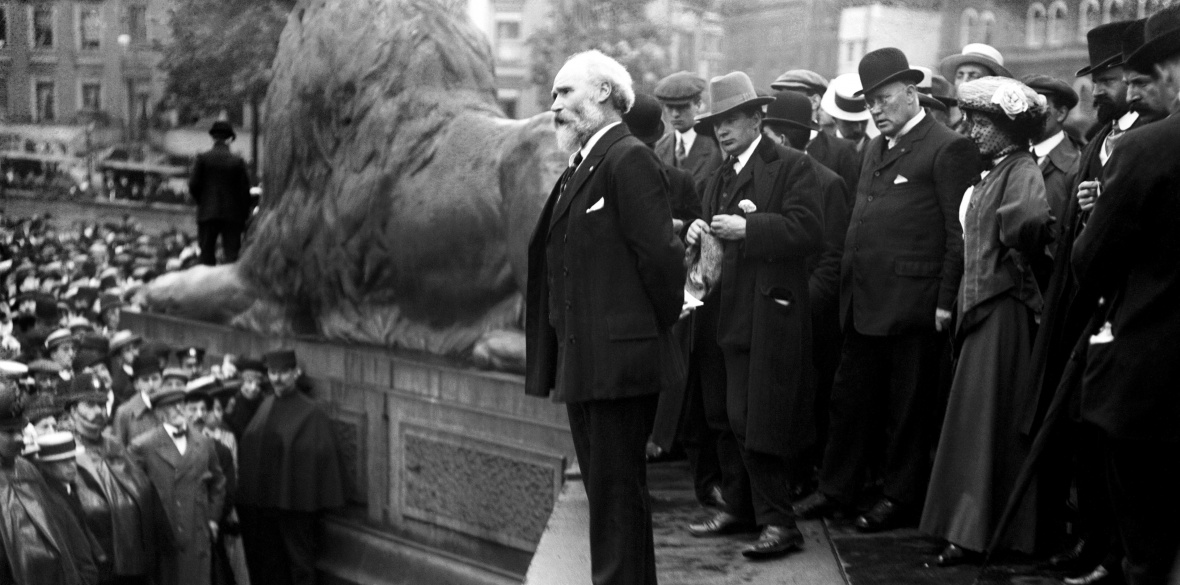This is the last article you can read this month
You can read more article this month
You can read more articles this month
Sorry your limit is up for this month
Reset on:
Please help support the Morning Star by subscribing here
ON a couple of bitterly cold winter days back in 1900 – Monday and Tuesday February 26-27 – a group of men in heavy woollen suits, coats, and scarves met at the Congregational Memorial Hall on Farringdon Street, in central London, just around the corner from what is now Aslef’s head office, to set up the Labour Representation Committee.
The 129 delegates present represented a broad range of working-class and left-wing opinion – from trade union activists to the Independent Labour Party, Social Democratic Federation and Fabian Society.
They were all disenchanted with the Liberal Party and approved a plan, proposed by Keir Hardie, to get ordinary people into Parliament to “promote legislation in the direct interests of labour” – meaning working-class men and women impatient for better pay and working conditions, proper holidays, decent pensions, and unemployment benefit.
The Labour Representation Committee was formed at the end of the Victorian era, when millions of men worked in mills and mines and factories and shipyards.
Labour’s heartlands were the south Wales valleys, the towns along the River Clyde, and the great industrial areas of Lancashire, Yorkshire, and County Durham. The LRC won two seats at the general election of 1900, 29 in 1906 – when its MPs changed its name to the Labour Party – and, 18 years later, in 1924, formed its first government under Ramsay MacDonald, the illegitimate son of a farm labourer and a housemaid.
In 1945, under Clement Attlee, Labour won a landslide, with 393 of 640 seats in the Commons, it established the National Health Service and welfare state, and nationalised mines and steelworks, utilities such as gas, water, and electricity, and, of course, the railways.
The party, under Harold Wilson, won elections in 1964, 1966, and (two in) 1974. And in 1997, under Tony Blair, Labour won 418 of 659 seats in Parliament.
All this – the parliamentary seats won, the governments formed, and the progressive legislation enacted to build a fairer country – flowed from that meeting over two days at Farringdon in February 1900.
As the Labour Party, forged in the factories and foundries of industrial Britain, meets in Brighton this week to plan a pathway back to power, we should remember its rich history, and its enormous achievements, and understand that the party has a future as well as a past – as long as it remembers why it was formed, who it represents, and what its purpose really is.
Because it was the trade unions – the voice of the organised working class – which formed the Labour Representation Committee which, after the general election of 1906, elected Keir Hardie, the MP for Merthyr Tydfil, as leader, and adopted the name of the Labour Party.
From time to time, over the last 121 years, there have been calls to break the link between the Labour Party and the labour movement. To remove the collective voice of organised labour – as some on the right say they want – would be to destroy the party’s foundations. And for what purpose?
The only people who want that – and they are not all in the Tory Party – are not on the side of the angels. They want to marginalise, if not destroy, Britain’s trade unions, and they want to diminish, if not destroy, the Labour Party.
That is because they are frightened of the power of the organised working-class. As Percy Bysshe Shelley wrote, in the aftermath of Peterloo: “Ye are many, they are few,” and they want to protect the vested interests of those few.
This is a critical time for the Labour Party and the labour movement. A general election is probably only a couple of years away, as the prime minister is unlikely to want to leave it until the last moment.
It is vital that we come together to build a party to win that election and form a government to rebuild Britain after years of Tory austerity and the ravages of the pandemic. The trade unions, which represent six million hard-working men and women in this country, three million of them affiliated through their unions to the party, is ready to help Labour to win again.
All workers should be in a union and all unions should be in the party. The Labour-union link has been a historic – and successful – relationship for 121 years. Trade unions formed the party to give working people a voice in Parliament as well as in the workplace.
I am proud to be a member of the Labour Party and I am proud to be an active trade unionist. I am loyal to both traditions and that is why I passionately believe in the link.
Mick Whelan has spent 37 years as a railwayman, and 37 years as a trade union activist, since he started work as a guard on British Rail’s Midland region in 1984, after which he became a freight train driver. Mick was elected Aslef’s general secretary in 2011. He is chair of Tulo, the Trade Union & Labour Party Liaison Organisation, which represents the 12 unions affiliated to the party. He was elected to the Labour Party’s NEC in 2017.












